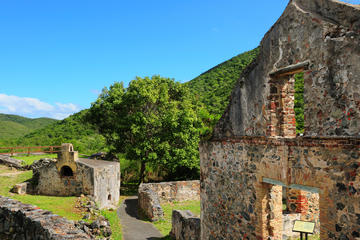Annaberg Sugar Plantation
TIME : 2016/2/22 18:03:05

Annaberg Sugar Plantation
Back in its heyday, the Annaberg Sugar Plantation was one of 25 facilities on the island producing sugar, along with molasses and rum. All that remains today are ruins, but they are an important reminder of St John’s past, and visitors can walk a trail that leads them through important structures such as slave quarters, windmills and factory remains.
Learn about 18th- and 19th-century sugar production and the importance of Annaberg, where slaves were brought in to clear the dense hillsides and terrace the slopes, allowing for farming. Slaves were also involved in actual sugarcane production and completed tasks like planting, harvesting and processing. When slavery was later abolished, the plantation was subdivided into small farms.
Evidence suggests there were at least 16 slave cabins at Annaberg, each constructed using branches woven together with a mud, coral and lime mixture called daub. Visitors can see placards depicting the areas where these slave cabins once stood and also view Annaberg's windmill, a key structure from the 1800s and one of the tallest windmills on St John at 38 feet tall.
Several factors contributed to Annaberg’s ultimate demise, including its steep and rugged terrain, which provided only marginal growing conditions; the introduction of the sugar beet, which could be grown in a multitude of climates; and the end of slavery in the British West Indies. The final nail in the coffin for Annaberg was the 1867 hurricane, earthquake and tsunami.
Practical Info
Annaberg Sugar Plantation is located on the north shore of St John, west of Mary’s Point in the Maho Bay quarter. There are no official visitor hours for Annaberg itself, but the Cruz Bay Visitor Center is open from 8 a.m. until 4:30 p.m. daily. There may be occasional live cultural demonstrations at the site, including basket weaving, baking or agricultural techniques utilized at the plantation.
